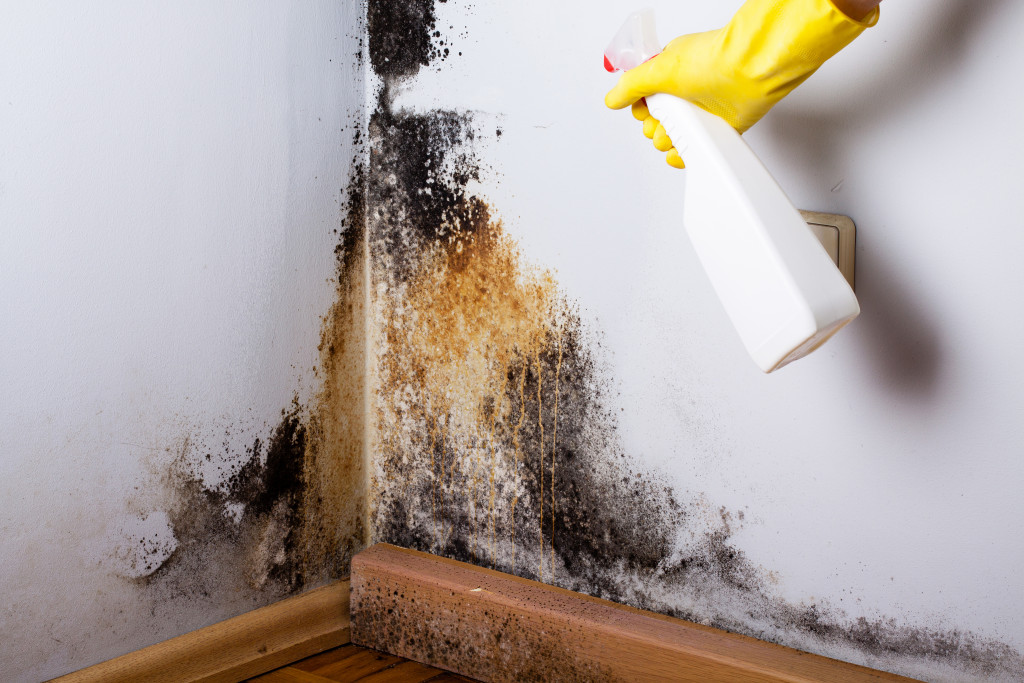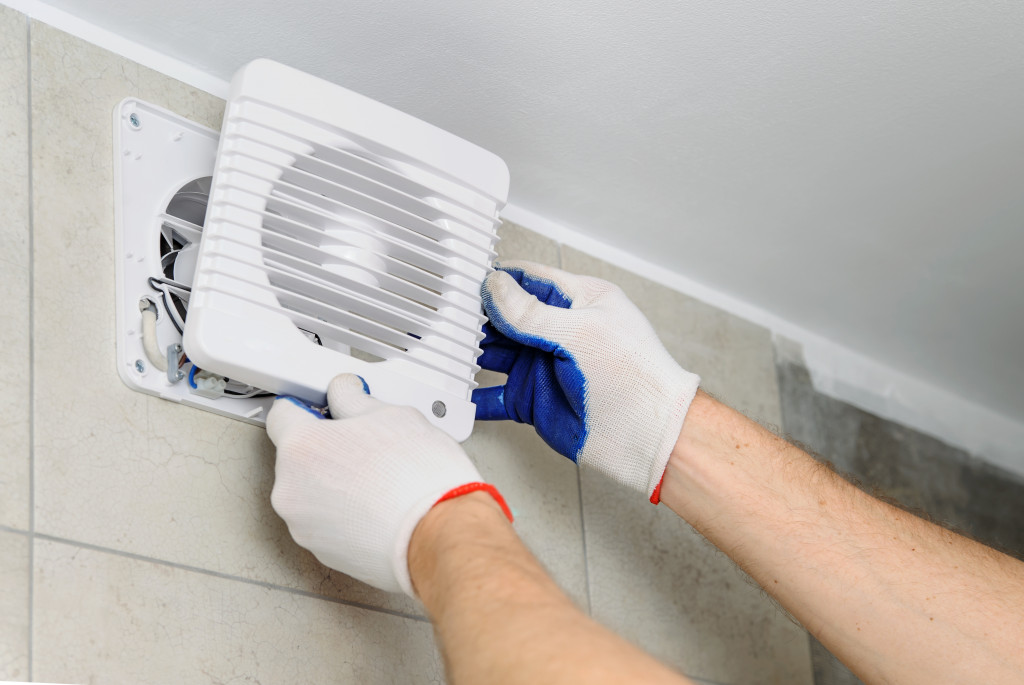- Mold, a prevalent household issue, thrives in warm, moist environments and can cause health problems if unaddressed.
- Mold detection can be challenging, requiring professional testing kits or experienced professionals to ensure accurate identification.
- Common reasons for mold growth include moisture buildup, poor ventilation, condensation, flooding, and abundant organic matter.
- Moisture-prone areas should be kept clean and dry, utilizing proper ventilation systems and repairing leaks.
- Preventative steps include installing transition moldings and exhaust fans and keeping the home’s exterior free of organic debris.
As a homeowner, you are no stranger to maintaining clean and healthy surroundings from carpets to upholstery, curtains to furniture, different types of cleaning, dusting, and vacuuming need to be done regularly. However, no matter how clean your house appears on the surface, one sneaky enemy can lurk right under your nose, quite literally! This enemy is none other than Mold. Mold growth is an unsightly, unhealthy, and expensive issue that can cause significant damage to your home.
What is Mold?
Mold is a fungus that can grow in any environment with moisture, warmth, and organic material to feed on. Mold thrives in damp places like the kitchen sink or bathroom but can also be found in dark, humid areas such as attics, basements, and crawlspaces. It affects indoor and outdoor environments and can cause serious health issues if not detected and dealt with in time.
How Can I Tell If There Is Mold In My Home?
Mold can be difficult to detect simply by looking around your home. The best way to detect it is by using a professional mold testing kit or having an experienced professional test your home for any signs of mold growth. Common signs include musty odors, discoloration on walls and floors, water stains, and visible mold patches.
Reasons You Have Mold in Your Home
There are many reasons you may have mold in your home. Here are some of them:

1. Moisture Buildup
The most common culprit for mold growth is moisture. If there is moisture build-up in your home, it is providing a perfect breeding ground for mold. Bathrooms, kitchens, and basements are the most susceptible to retaining moisture, particularly in humid weather, resulting in mildew growing on walls, ceilings, and even wooden or cement floors.
Therefore, it is crucial to keep these areas clean and dry. Use appropriate ventilation systems or fans to circulate air, remove standing water, and repair any leaks that can cause prolonged dampness around the house.
2. Poor Ventilation
Poor ventilation refers to poorly circulated air, another leading cause of mold growth. If your home’s heating, ventilation, and air conditioning systems are not functioning correctly or insufficient air circulation, it can result in mold infestation. This is especially true if your home is tightly sealed, which traps air and promotes moisture buildup. Proper ventilation should be utilized to aid in humidity control.
3. Condensation
When warm air comes into contact with cool surfaces, such as windows or metal pipes, it causes condensation to occur. This condensation creates moisture that promotes mold growth. Therefore, investing in double-pane windows or insulated walls is vital to prevent cold surfaces that cause condensation.
4. Flooding
Home flooding is a severe issue and a significant cause of mold infestation. Even minor water damage can cause mold growth, and floodwater can remain trapped inside walls for a long time, creating a damp environment suitable for mold growth. Ensuring your home is cleaned and dried immediately after a flood is crucial to avoid mold growth.
5. Organic Matter
Mold feeds on organic matter, which provides a food source for mold growth. Organic matter waste, such as leaves, grass, and other debris, particularly when trapped under a house or in the rain gutter, can quickly create mold growth in your home. Keeping the exterior of your home clean and free of debris can be very helpful in avoiding mold growth.
How to Prevent Mold Growth
There are various ways you can renovate your home to reduce mold growth. Here are three of those ways:
Transition Moldings
It’s important to separate your walls and flooring using transition moldings to keep moisture away. This is because when the flooring and walls are close together, it can cause water damage and provide a perfect breeding ground for mold spores.
Transition moldings allow any moisture on the floor to be diverted from the walls, reducing mold growth chances. Additionally, you should install robust end cap moldings. These moldings are designed to prevent water from getting inside the walls and create an air gap, which helps keep moisture away.

Use Exhaust Fans
Exhaust fans in all bathrooms, kitchens, and other damp areas can help reduce moisture levels. Exhaust fans pull out moist air and circulate it outside your home instead of letting it stay trapped and collect moisture.
Install Rain Gutters
Rain gutters are essential in helping divert water away from your home’s foundation. If you don’t have rain gutters installed, it is highly recommended that you do so. This way, any excess water or moisture close to the foundation of your house can be channeled away before it has a chance to cause water damage and promote mold growth.
Mold can be a problematic issue to detect and deal with, but by understanding what causes it, you can help prevent it from occurring in the first place. If you notice any signs of mold growth, you must act quickly. By following these steps, you can reduce your chances of dealing with mold infestation in the first place.

